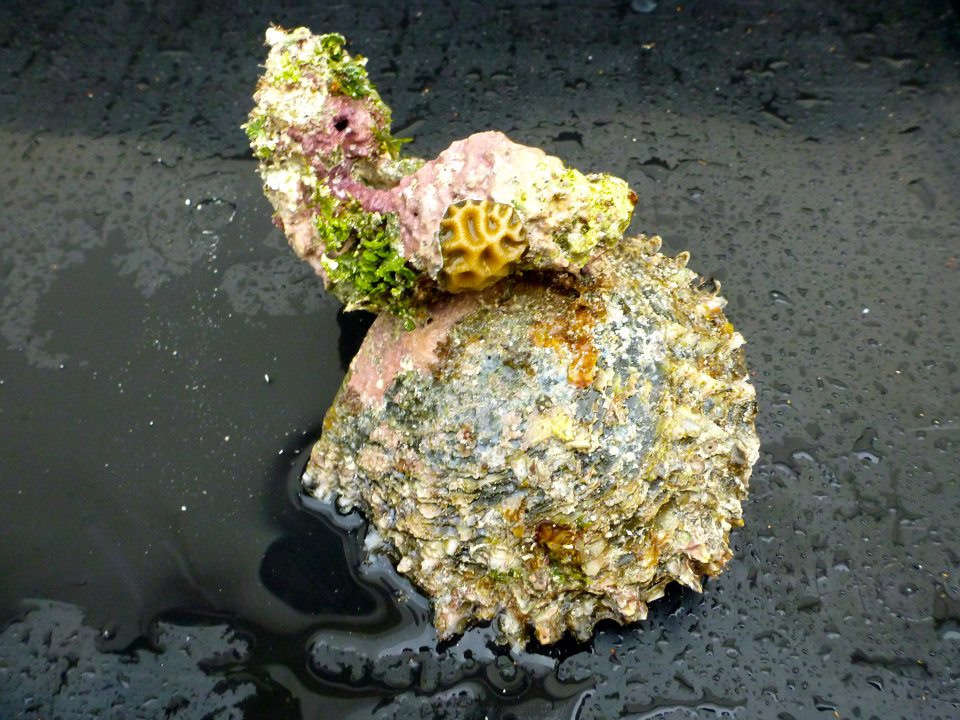Biofouling
Biofouling involves the settlement, metamorphosis and growth of plants and animals on and in the pearl oysters. The ecological succession involves an organic conditioning film, which accumulates on the shell surface. Primary colonization by prokaryotes and eukaryotes then commences on the organic film. Passive bacterial adsorption on the surface takes place and a complex biofilm develops. More complex colonization occurs over time with the settlement of macroalgal spores and propagules, and the larvae of invertebrates including ascidians, sponges, bryozoans, barnacles, bivalves and polychaetes. Barnacles, oysters and other molluscs can physically prevent the pearl oysters from opening by growing along the hinge line and cementing the valves together. Boring polychates, sponges, molluscs and isopods cause considerable damage to the shells. The types of foulers and their relative abundance vary both temporarily and geographically (Southgate & Lucas 2008).
The major effects of the colonization of shell surfaces by fouling organisms falls into three major categories.
1. Physical damage by invasive organisms that bore into the shell causing shell deformities, impacting on nacre production and eventually resulting in the death of the host.
2. Mechanical interference of shell function by fouling organisms that settle on the hinge and lip of the oyster, disrupting the valve opening and closing, and leaving the oyster susceptible to predators.
3. Biological competition for resources such as phytoplankton and space.


|